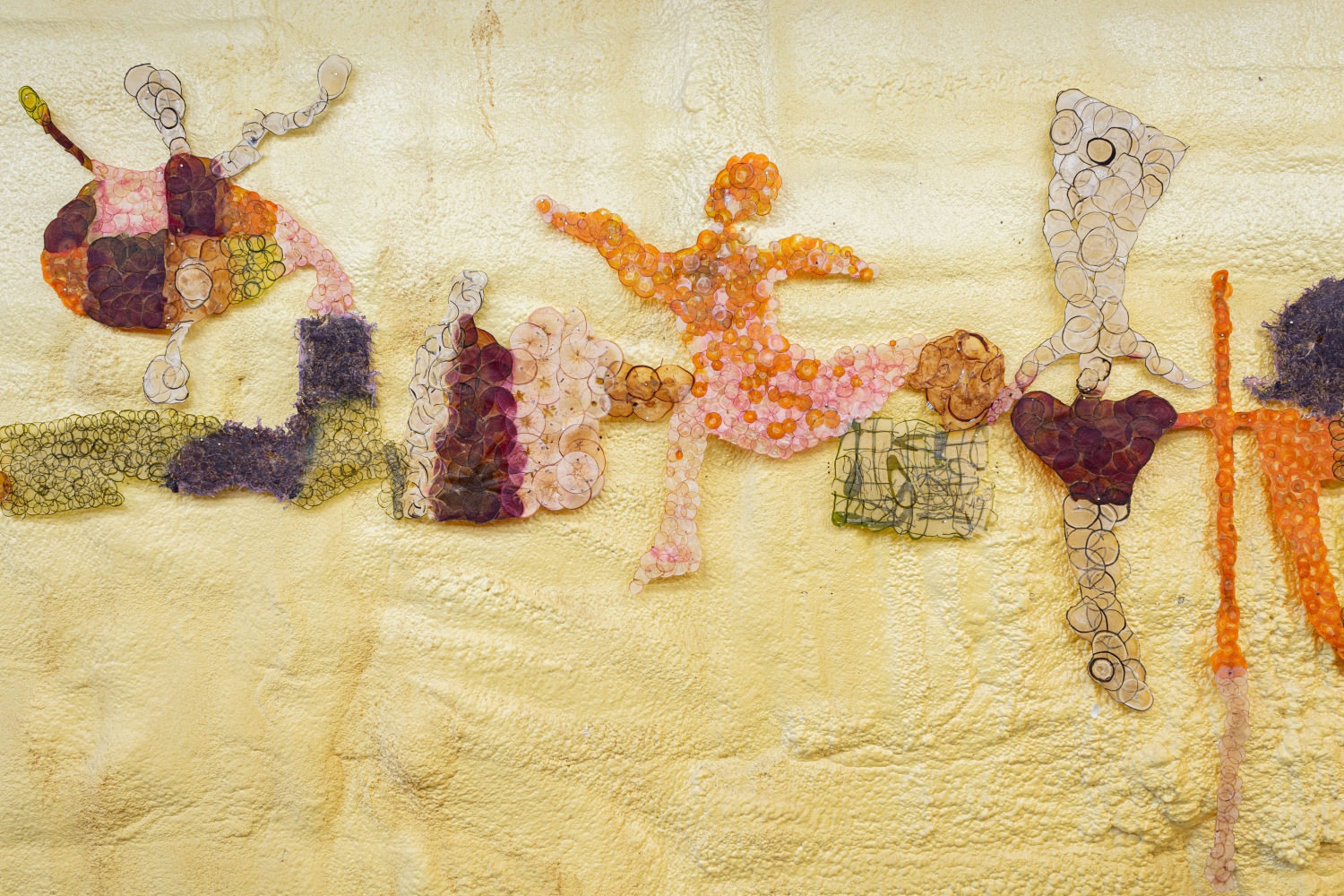 Picker by Ruby Jackson. All installation images courtesy of Chatham Soccer.
Picker by Ruby Jackson. All installation images courtesy of Chatham Soccer.
Preserving Picked Papers
in Upstate New York, Ruby Jackson makes wall-bound works out of farm-grown foods.
By Theodora Bocanegra Lang
8.20.2025
“You should scent the sweet breath of clustering gems,
As in the pink of perfection they’re seen;
Why, they blush in their beauty and bountiful growth,
As they blend their bright colors with green.”
- excerpt of “Her Destination” by W.G. Rhorback,
from a postcard promoting the Apple Annual fair
As in the pink of perfection they’re seen;
Why, they blush in their beauty and bountiful growth,
As they blend their bright colors with green.”
- excerpt of “Her Destination” by W.G. Rhorback,
from a postcard promoting the Apple Annual fair
In 1910, the city of Watsonville, California, started a fair. The Apple Annual was a massive exposition celebrating one of the city’s biggest crops: apples. The fair dealt in wonder and abundance, surprising people with apples both in form and sheer volume. There were dioramas of judicial buildings made of apples; there was a model of a globe with whole red apples for the continents and slices for the oceans.
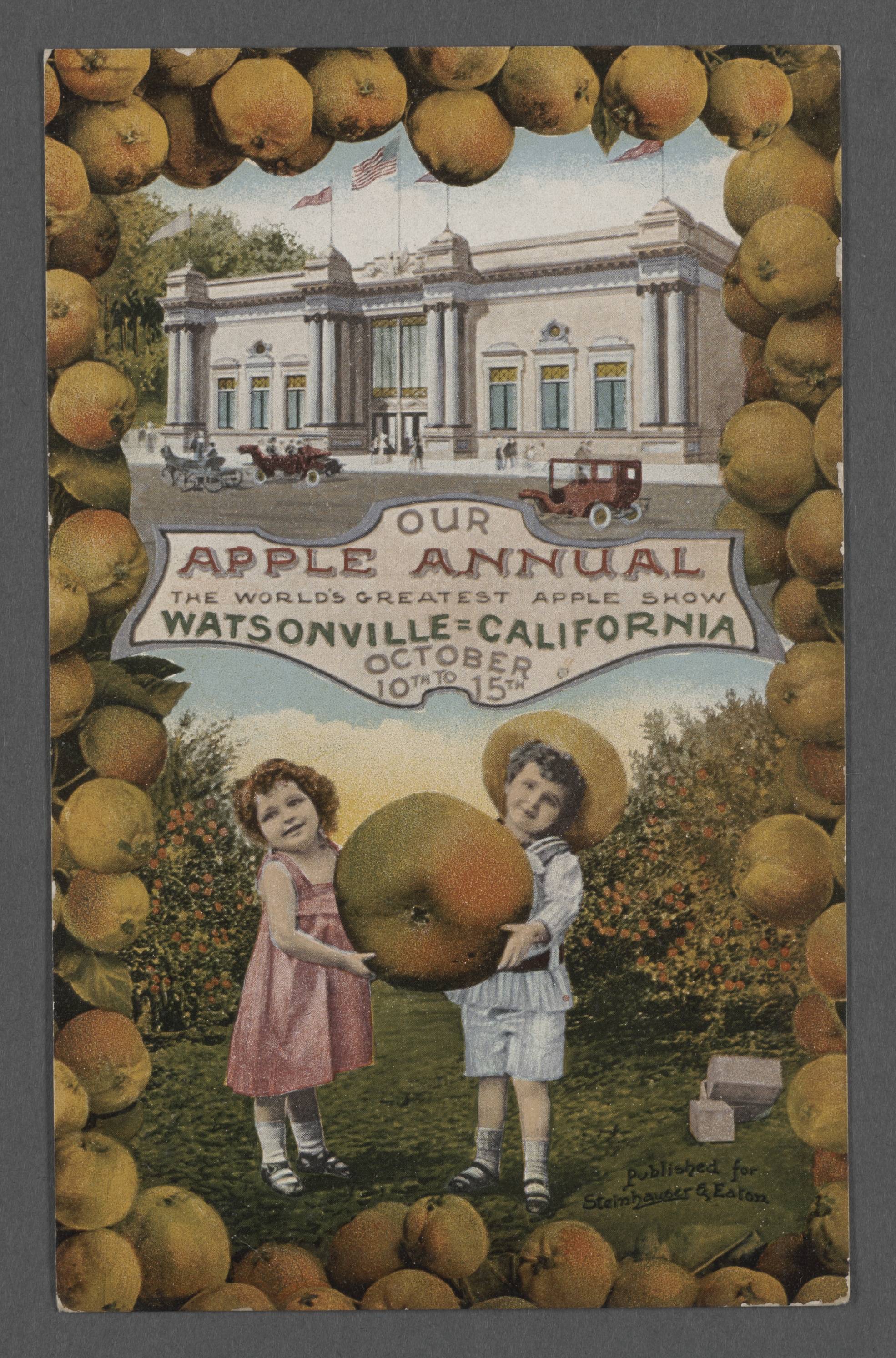
Apple Annual postcard (circa 1910) from the Kransky collection
of Mitchell postcards at UC Berkeley’s Bancroft Library
Ruby Jackson’s current exhibition, Picker at Chatham Soccer in Upstate New York, takes this fair as inspiration. Influenced by the impressive spectacle, Jackson here makes wall-bound works out of various farm-grown foods, subjecting radishes, zucchinis, and yes, apples, to laborious paper-making processes, yielding works that simultaneously evoke cryptic ritual and salad bars (a more modern kind of agricultural abundance). The resulting work is emphatically ephemeral; the plants are preserved but not quite transformed. The process has extended their lives, but they are delicate, brittle, nearly translucent, and dry as bones.
Jackson’s second point of inspiration is the antique store her grandparents had on Long Island. After the store closed, Jackson found photographs that catalogued the inventory, quick snapshots of the wares for sale. She uses the same photos here as formal reference, shaping the assembled fruit and vegetables into the flatly rendered objects seen in the photos. These leftover images once served a functional purpose but now seem like remnants of old technology and an old world. Using this and the similarly old technologies of papyrus-making and agricultural display, the artist makes a mysterious garland of shadowy shapes and figures, creating curious and perhaps nostalgic entry points through which we may consider vanishing practices.
Chatham Soccer is located in the basement of a paper mill that is now used as studios. The room itself is cantilevered over the mill’s dammed river waterfall. Three of its walls are insulated with crunchy spray foam, while the fourth has retro wood paneling that is missing or chipped in occasional stripes. The space indexes many previous uses, each wall or exposed beam serving as a cobbled-together historical record, exchanging with Jackson’s work a similar palimpsestic form from past modes and realities. The mill itself is surrounded by verdant farms that grow many of the same fruits and vegetables that Jackson uses, providing an immediate contrast to the artist’s treatment of her materials.
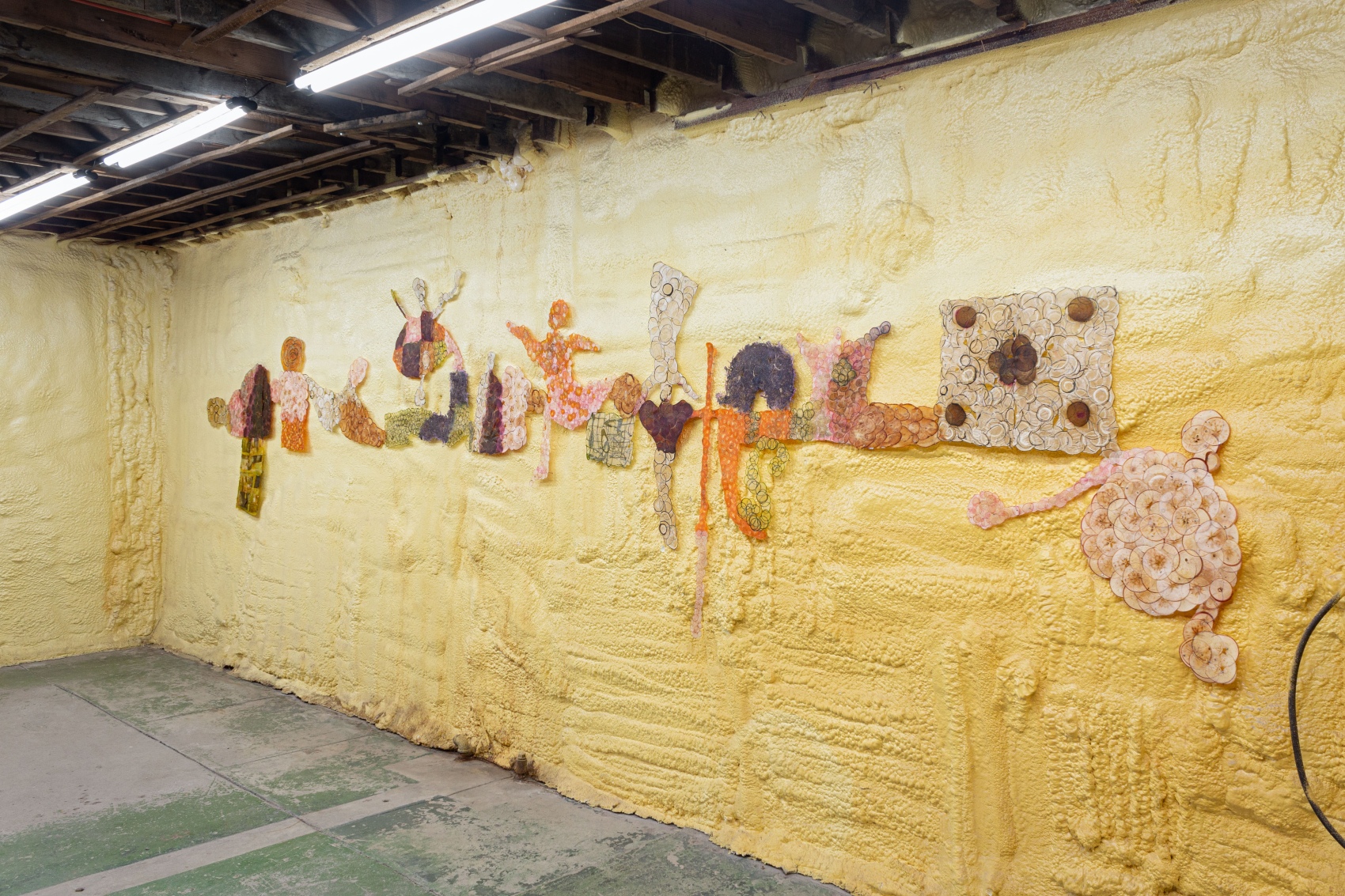

Most fruit and vegetables Jackson uses are relegated to their own personal shapes, some appearing as seemingly whole objects and others as patches of larger forms. A rosette of cantaloupe slices resembles a head atop a torso segmented into pinkish apple and orange carrot strata, with a misshapen hambone arm of what appears to be black radish. Jackson carefully pins and nails each slab, circle, or figure together, creating a patchwork that resembles a quilt. The resulting work spans the sickly yellow foam wall of the gallery, recalling a celebratory garland. Instead of spelling out “Happy Birthday” or a similar themed message, however, it traces a fluid and clunky gesture, sliding into vague scenes. The shapes form meandering abstract swathes of bloody beets and brown pears, evoking organs or cells. A figure skater emerges, gliding on one skate with arms outstretched, a mix of carrot and apple. Her back leg balances on a rectangular lattice of long zucchini strips.
To make such patches, Jackson chops and cooks the food, then layers the slices into a hydraulic press, expelling all moisture. This yields what the artist describes as papyrus. In a way, it’s like preparing a gourmet meal, with careful attention paid to both the formation and appearance of thinly sliced radishes, circles of melon, or carrot coins. In another way, it’s like the dioramas of the Apple Annual, using food as material only, without function or the suggestion of sustenance.
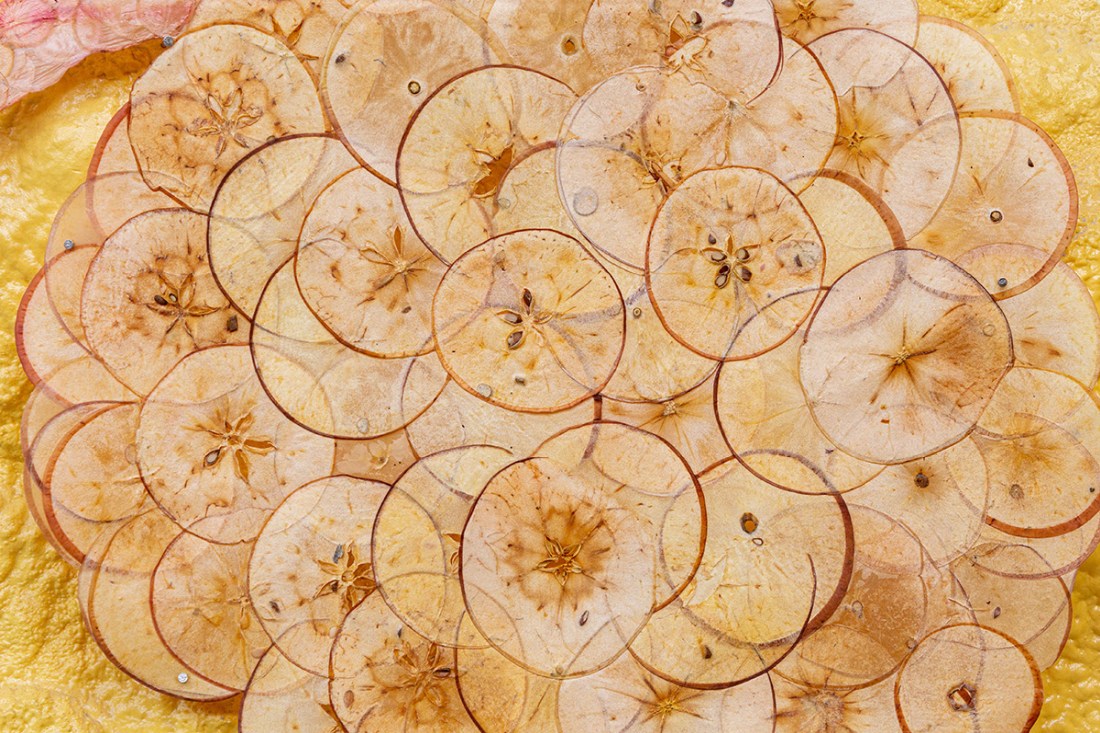
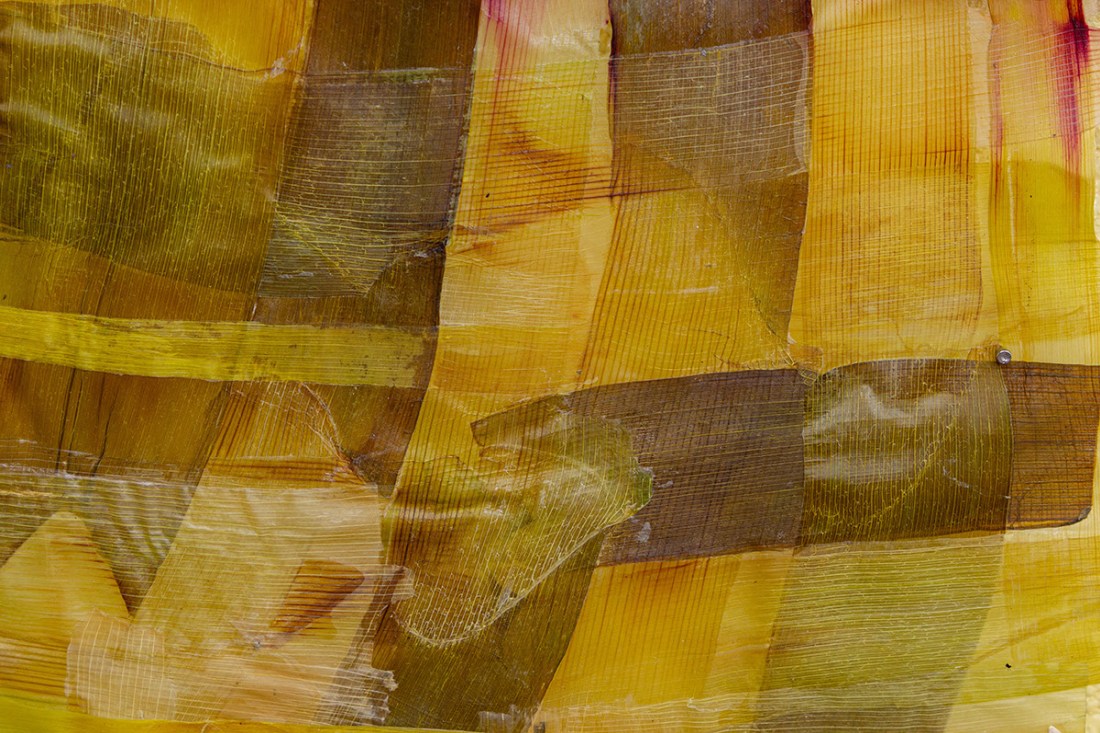
Though Jackson’s work lays flat, unlike the towering sculptures of the fair, the fruits and vegetables used still evoke the lost art of American agricultural pageantry. We don’t often think of fruits and vegetables as much other than food, and this is why the extravagant exhibitions of the Apple Annual and similar fairs were and are so impressive. After four years of success, the Apple Annual was subsumed into a larger event in 1914. With the beginning of World War I, the fair only made it another year, ending in 1915. Today, county fairs are still popular, but this kind of display is not. Most similar fairs consist mainly of portable carnival rides, easily transported from state to state with no local connection.
~~~~~
Chatham Soccer is a gallery located in Chatham, NY, in Columbia County, which holds its annual county fair later this month. Picker is on view through August 23, 2025.
